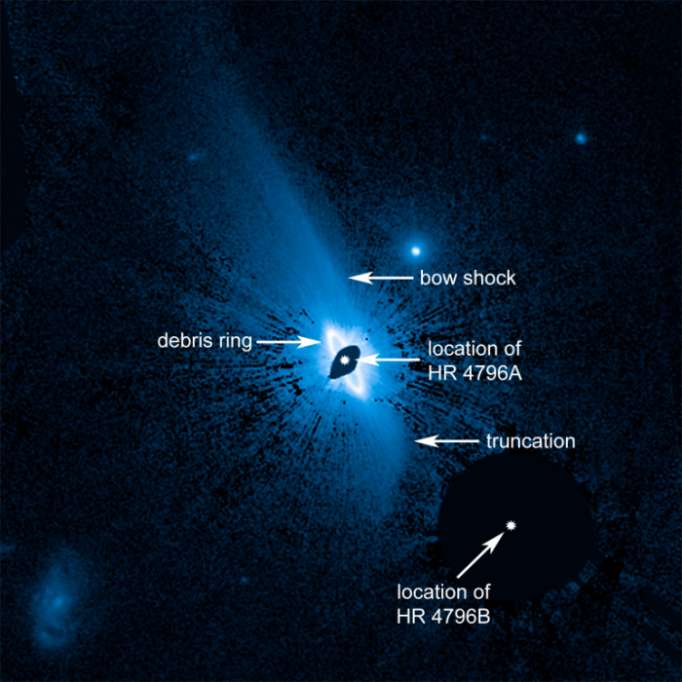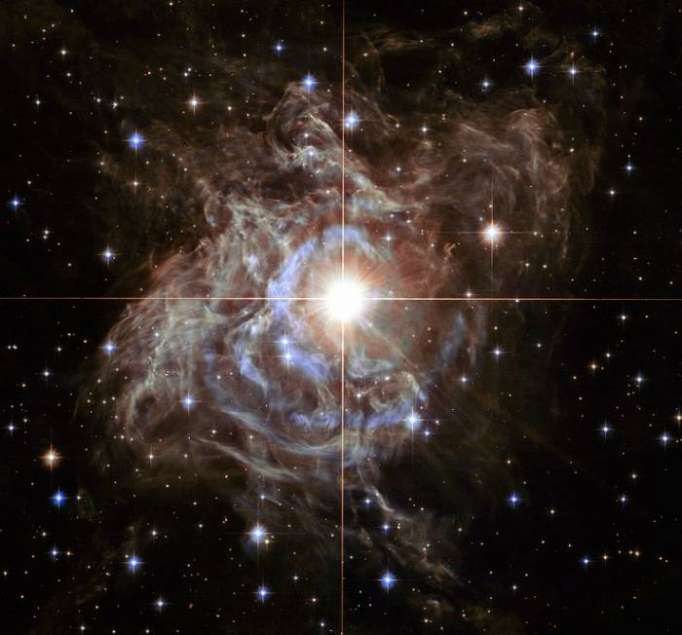HR 4796A is located about 237 light-years away, and is merely 8 million years old, an infant in cosmic terms. The star, which has been observed by Hubble earlier too, is in its planet-forming phase, as evidenced by the presence of large amounts of dust in its vicinity. A narrow ring of dust which appears very bright has been known to encircle the star, likely shaped by the gravitational effect of a giant planet which hasn’t yet been seen.
The much bigger field of debris which has now been discovered is a complex structure. The very fine dust that forms it was likely created when infant planets, still in development, crashed into each other near the star. This formed the inner ring, which is about 7 billion miles away from HR 4796A, a star whose luminosity is 23 times greater than the sun’s. Under influence of the intense starlight, the dust got blown much farther in space.
“The dust distribution is a telltale sign of how dynamically interactive the inner system containing the ring is. We cannot treat exoplanetary debris systems as simply being in isolation. Environmental effects, such as interactions with the interstellar medium and forces due to stellar companions, may have long-term implications for the evolution of such systems. The gross asymmetries of the outer dust field are telling us there are a lot of forces in play (beyond just host-star radiation pressure) that are moving the material around. We've seen effects like this in a few other systems, but here's a case where we see a bunch of things going on at once,” Glenn Schneider of the University of Arizona, Tucson, who was lead author of a paper describing the larger debris disk, said in a statement Tuesday.

Hubble uncovers a vast, complex dust structure, about 150 billion miles across, enveloping the young star HR 4796A. A bright, narrow inner ring of dust is already known to encircle the star, based on much earlier Hubble images. Photo: NASA/ESA/G. Schneider (Univ. of Arizona)
HR 4796B, a red dwarf star that forms a binary system with HR 4796A, could have influenced the outer debris field, which is far from uniform in shape. The structure is a lot more extended in one direction than in the other, the side toward HR 4796B appearing squashed. A tidal tug from the red dwarf, located 54 billion miles away, could be affecting the dust structure. Or it could have been a result of HR 4796A interacting with the interstellar medium.
The observations were made using Hubble’s Space Telescope Imaging Spectrograph (STIS), which allowed researchers to map the small dust particles in the outer reaches of the HR 4796A system. Hubble has been instrumental to the discovery of many of the known debris rings around stars, whose existence, and role in planet formation, was theorized as long back as the mid-18th century.
The paper, titled “The HR 4796A Debris System: Discovery of Extensive Exo-ring Dust Material,” appeared online in the Astronomical Journal.
More about: star
















































